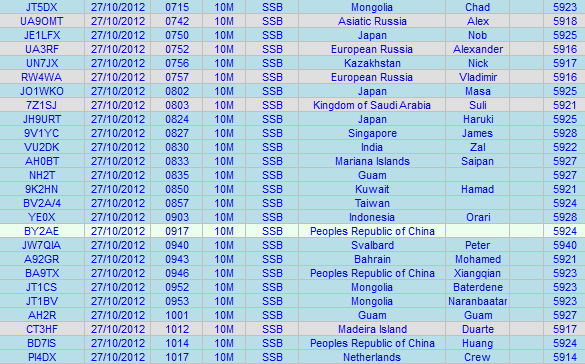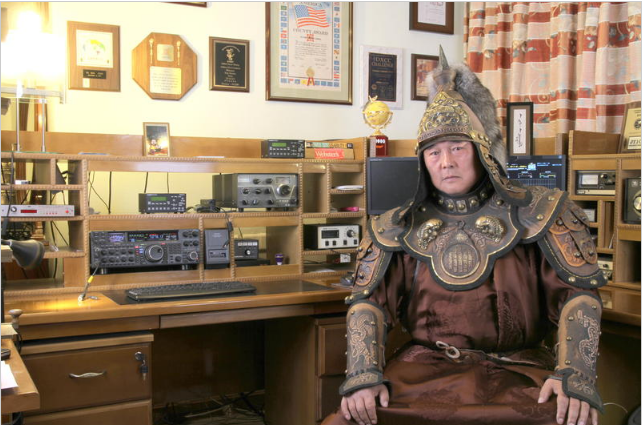Homemade HF Amplifier 15KW (4CX10000D)……
Nice !!!!
Homemade HF Amplifier 15KW (4CX10000D)……
Nice !!!!
The Araucaria DX Group DXpedition to St. Peter and St. Paul Rocks, PY0S, (under the call sign PT0S) is just hours away.
There has been an official ban on Amateur Radio activities from PY0S (IOTA SA-014). Although the ban, (which was created for environmental and safety reasons), remains in place, the Araucaria DX Group was given a special permit by Brazil’s SECIRM (Secretaria da Comissao Interministerial para Os Recursos do Mar), the Brazilian Navy, Ministry of Environment and LABRE to conduct a two week long operation.
The operation will have a strong low band focus. There will be a dedicated 160 meter station operating on 160 meters from sunset to sunrise. A second station will be on 80 and 40 meters at night. During the day we will operate two stations on the higher bands — and 6 meters — based on conditions. RTTY will also be supported.
The DXpedition’s goal is to give this rare and difficult entity to as many amateurs as possible, taking maximum advantage of this unique opportunity. The group will be using newly designed RX antennas and receiving equipment to allow small and QRP stations to work PT0S on all bands, but especially on 80 and 160 meters. All QSOs will be loaded onto LoTW within 36 hours of taking place.
They are scheduled to sail for St. Peter and St. Paul Rocks the evening of Nov 05 (maybe early Nov 06). They expect to arrive on the rocks the morning of Nov 09. They also hope to raise the main station during the day and be on 160m in the evening.

LoTW log processing is about 42 hours behind.
The world’s biggest contest has just concluded (CQ WW SSB) and those logs are filling the queue.
Please do not upload your logs more than once.
Thanks! (from LoTW!)
Within a few minutes of starting, JE1LFX was logged followed by several other JA, 9V1YC, VU2DK, 7Z1SJ, BV2A/4, 9K2HN and YE0X, amazing DX for 10m. the first of the new slots then appeared at 0800 as AH0BT was logged first call from Saipan in the Mariana Islands. Soon after, the first of three stations in Guam, NH2T was in the log. XV1X, T6MO, AH2R were amongst the rest of the mornings DX before it opened to South and North America. XP1A in Greenland was another ‘new one’ on 10m followed by half a dozen PY and LU stations.
There were some incredibly big signals out there for sure, many of course from the big contest stations but also from the ‘little fish”. Propagation was certainly good but as well as working the DX, I actually also worked into GM, GD, GI, EI, GJ and several others in mainland G, crazy!. I finished the Saturday’s session at 1500UTC having logged many
Countries such as Puerto Rico, Colombia, Chile, Uruguay, Ecuador, Papua New Guinea, Martinique, Barbados, Montserrat, Venezuela and 27 States in USA (including N5RZ who is worth a mention, as the [YL?] operator was very good!).
Sunday morning started around the same time at 0700 (after a clock change and reverting to UTC for the Winter). It was evident there were not as many stations on as the previous day but none the less 6 BY stations were the first to be logged and several JA’s to follow. VK6NC and Dale VK4DMC were the first Oceana’s I heard and at the same time logged AP2IA in Pakistan on the same beam heading. It was grewat to hear an old friend in that of Clive Tang, VR2XLN from Hong Kong. Clive wasn’t too strong (but neither were the rest!) but very happy to share a brief contact with him.
Today didnt bring too much to get excited about really. I worked D4C in Cape verde but really struggled with ZD8O in Ascencion for some reason. I logged him eventually but this was after two or threwe attempts over the 48 hours contest.The rest of the day continued with a good number on NA stations logged but the furthest West really were New Mexico, Arizona,and California.
 I ended the Contest at 1400 local ( a long time before propagation disappeared but I had other things to do!). Over the time I spent on air I logged 372 qso’s, all on the 10m band only. I worked 31 CQ Zones. I managed to work all Continents apart from Antarctica and 33 States in NA. I am sure I had a fair few new JCC and JCG’s (Japan Counties/Guns) but I havent looked through the data as yet.
I ended the Contest at 1400 local ( a long time before propagation disappeared but I had other things to do!). Over the time I spent on air I logged 372 qso’s, all on the 10m band only. I worked 31 CQ Zones. I managed to work all Continents apart from Antarctica and 33 States in NA. I am sure I had a fair few new JCC and JCG’s (Japan Counties/Guns) but I havent looked through the data as yet.
Finally, 77 DXCC were logged all on 10m. However, I was disappointed to only have only 7 new Band slots from the Contest, I expected/hoped for more 🙁
Thanks to all that worked me, a very enjoyable ‘s n p’ experience!

Photos’s above show Chadraabal Choigonjav JT1DX (JT1CO) station, Antenna Farm and in traditional costume – Thanks!
I am pleased to say that today I have received the Logbook Of The World (LOTW) certificate for Paolo JY9ET.
Paolo has been active in Jordan now for several months but his radio operating depends on his work schedule which, at the moment is heavy.
Paolo’s full Log is now loaded and showing correct LOTW qso confirmations.
Of course traditional Paper confirmations can still be obtained via MØOXO OQRS with either Direct or Bureau options available.
The project is based on 16 months of logistical work, with support from numerous LU hams, non-hams and Government of Chubut officials. We are especially indebted to Jose (LU2WAZ), his colleagues from the Radioclub de Puerto Madryn, Federico (LU6KK), Carlos (LU1EBR) and Cristian (LU1WCR). We would also like to express our appreciation to Simon (IZ7ATN), Ezequiel (LU1EEZ) and Mark (LU7CAW), who independently were keen to embark on a similar project 5 months ago and graciously stepped down when they became aware of our plans. Thank you guys for your great sportsmanship!
Our scope is to give everyone around the world a chance to log us. However, we would like to underline that the operation will depend entirely on the weather conditions. Since in case of emergency the team cannot leave the island at night – if staying on the rocks after dark will be deemed unsafe, this will reduce our daily operating time, as the team will have to travel day-light hours between mainland and the island. At this time we have applied for a special callsign, and a website is under construction.
QSL cards will be available through Cezar/VE3LYC, either direct or via the bureau. A call for financial support will be posted on the expedition website in due course.
I was pleased to upload to LOTW again today and saw several new DXCC’s being confirmed. This brought my current totals to ;
313 DXCC (W) 271 (C) All time and 310 DXCC (W) 268 (C) Current. That of course was for all modes but mode selection shows that SSB has 294 (W) followed closely by CW on 266 (W).
Its a little sadder on RTTY so more emphasis needed on that mode in the coming months I think!
Anci, JA2ZL will be active from Pago Pago as KH8/JA2ZLbetween October 23-29, 2012. QRV on 80-10m, CW/SSB/RTTY using a Hexbeam and verticals. It doesn’t look as though 160M chasers will secure a qso as no activity planned on that band.
Only two Band slots here for KH8 so a few more would be more than welcome 😉
QSL via JA2ZL (JARL)
An international team of astronomers has caught a star in the act of devouring one of its planets. BD+48 740, a red giant they observed using the 9.2-meter Hobby-Eberly Telescope at the McDonald Observatory in Texas, appears to have the fumes of a scorched planet in its atmosphere. This is consistent with a rocky world, recently destroyed.
Could the same thing happen to Earth?
Researchers who specialise in stellar evolution have long known that the inner planets are in danger. The trouble starts in the distant future when the sun’s core runs out of hydrogen fuel for nuclear fusion. To keep the fires burning, the sun will begin to fuse hydrogen outside the core, in a layer closer to the stellar surface. This will turn the sun into a red giant, at least 200 times wider than it is today. Mercury, Venus, Earth and possibly even Mars could be engulfed.
The fate of Earth is not a certainty, however. Some researchers believe that Earth’s orbit might spiral outward, keeping the planet at a safe distance from the approaching inferno. This could happen if solar winds carry away a significant fraction of the sun’s mass in the years leading up to the red giant phase.
Click the image for the movie.